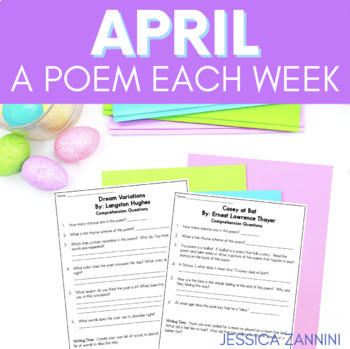- PDF
Description
Do your students need help with the elements of poetry? Use the Free April A Poem Each Week. In this resource you will get poetry comprehension questions for 4 spring poems. Each guide includes comprehension questions, and activities to connect with the poem.
Spring Poems you will need for this month:
Now We Are Six - A. A. Milne
Mary's Lamb - Sara Hale
Dream Variations - Langston Hughes
Casey at the Bat - Ernest Lawerence Thayer
Poetry Terms Used in this resource:
Ballad
Line
Stanza
Rhyme Scheme
These Poetry Vocabulary Posters can help students learn these elements of poetry.
Ways You Can Use These April Poems
- Literacy Center
- Whole Group Lesson
- Morning Work
- Library Lesson Plan
- Just for Fun
You can find these in your school, local library or online. If you have trouble locating them, please ask your school library media specialist for assistance.
Grab this April a Poem Each Week and have your students engaging in reading and writing poetry.
If you enjoy these poetry activities you can also download the Free September A Poem Each Week.
Other Products You Might Enjoy




